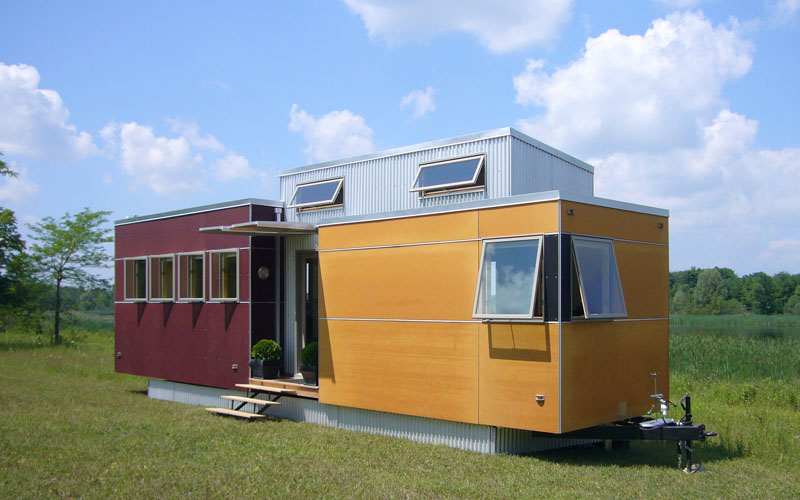Trailer parks get a bad rap, especially in the post-Katrina days when we’ve come to see them as North American refugee camps slowly poisoning their displaced inhabitants with formaldehyde fumes. But the trailer park, done right, actually holds great potential as a development model.

MiniHome: a big idea.
Sustain
Even in its current form, with communities of not-particularly-mobile homes plopped atop concrete blocks, the trailer park is a kind of low-rent template, a version of new urbanism without the bells, whistles, and marketing budgets. In Canada particularly, trailer parks are vacation spots, more campground than affordable housing, with density, communal green spaces, swimmable and fishable bodies of water, and dwellings a fraction of the size of the current average, which falls in the 2,500-square-foot range.
“If you look at all the ground rules and best practices guidelines for perfect ecotopia villages, you’re going to see all the things you find in a [Canadian] trailer park,” says Andy Thompson, designer of the Sustain MiniHome, an extremely green mobile home manufactured in Toronto.
Problem is, those parks are filled with, you know, trailers. The formaldehyde kind.
Well, Thompson has a solution to that particular problem.
He’s partnering with trailer park owners in Canada to transform older parks into those perfect ecotopia villages, with MiniHomes replacing the formaldehyde models. Just call them MiniHome Parks. They will be second-home spots at first, but someday, if all goes according to Thompson’s plans, they’ll be a new vision of redevelopment.
MiniHomes — solar-powered, recycled water-using, super-insulated dwellings made of renewable materials — will begin peppering trailer parks around Canada later this year, with an eye toward realizing the master makeover plan that Thompson and partners have cooked up.
The master plan includes much more than replacing the old trailers with new. The goal is to return the parks to as close to their pre-development incarnations as possible, through habitat restoration, de-paving of surfaces to improve groundwater quality, and rainwater collection. Thompson also envisions organic gardening; community solar power, wind turbines, and electric vehicle fleets; even organic grocery delivery and pet waste compost collection areas (there’s a long list of everything the MiniHome park aims to do here).
They hope to have 10 to 20 units per acre, so there is density yet privacy. People will buy their own units — a 12-by-34-foot model starts at $139,900 — and pay an annual fee of $1,500 to $5,000 for upkeep of the park. Might seem a little pricey for 400 square feet — the average price of a single-wide in the U.S. in 2007 was $37,200 — but owners have the option of placing their units into a rental pool when they’re not basking in the green glow, and Thompson points out that a vacation cabin by a body of water is often much more expensive, without the sleek design and environmental benefits.
Of course, it takes time to go from the current model of trailer park to the environmental vacationer version. Most parks will add MiniHomes, rather than displace folks who already have traditional trailers there, and the MiniHome Park works particularly well if you can get your hands on a vacant park. Thompson estimates that the reinvention can take between one and five years, depending on how populated the existing park is. Rather than what he calls the “brutal development approach” — kicking everyone out so the parks can be re-landscaped and old trailers replaced with the new — he chooses the slow growth approach, transforming inhabited trailer parks unit by unit, block by block.
Which is perfect, because Thompson hopes these MiniParks will become year-round destinations instead of three-season retreats, and that they will both transform our images of the trailer park and municipalities’ resistance to them. They may be filled with mobile homes, but Thompson hopes MiniHome Parks will be here to stay. This is not about reinventing the trailer park, he says: “We’re looking at this as the future of the suburb.”



